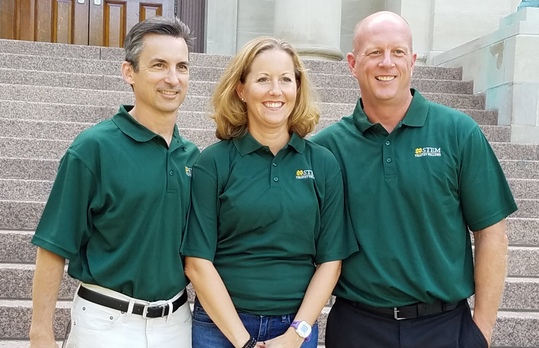
A trio of teachers became students this summer in an effort to become more effective educators.
The teachers hold a variety of roles at St. John XXIII School in Scottsdale but are united in their desire to better integrate science, technology, engineering and math — STEM — across the curriculum. They spent two weeks acquiring best practices to do so and planning for the school’s immediate future.
It’s all through St. John XXIII’s membership in the University of Notre Dame’s Trustey Family STEM Teaching Fellowship July 18-29. This marked the first of what will be three summers for St. John XXIII teachers to be part of the fellowship.
Eight other campuses nationwide, with about half of them Catholic, are part of the cohort.
#Truste16 #DoItForJoe Welcome cohort 2!! pic.twitter.com/RFcpu0L0uH
— Pilar Gonzalez (@PilarRFU) July 25, 2016
Essentially, it’s a three-year self-study of how the schools are implementing STEM initiatives. Regular feedback from STEM experts, master teachers and peers guides them along the way.
“We wanted to get the latest and greatest on STEM,” Dr. Karl Ochsner told The Catholic Sun. The eighth-grade teacher has paved the way for St. John XXIII and other diocesan schools to implement iPads and other STEM opportunities.
A 3D printer, for example, allowed students to turn scaled drawings of envisioned lunar base modules for an Aerospace Challenge into a tangible reality. Last year, an eighth-grade team did something similar by creating a model of a shoe for an eCybermission, essentially a virtual science fair. The special shoe could charge an electronic device.
Often times as a teacher, Ochsner said, “you try it and say it didn’t work, but you don’t have any data to back that up.”
The fruit of their work through the fellowship will counteract that.
Time for reflections! #trustey16; @STEMatND; @ClaraBartonElem pic.twitter.com/EuJjjYr7nn
— Lynne Kizpolski (@KizCBE) July 29, 2016
Teachers will be recording their lectures and projects, presenting their own learning to colleagues and receiving critical evaluations over the next few years.
The STEM evaluators might see St. John XXIII students experimenting with “writing” code. Michelle Heintz, who taught fifth-grade science for much of the last 10 years, had students work with a coding program to control movement and then let students click the “run” button.
“It was a fun way for the students to problem solve in order to get a character to move how they wanted it to move or how to form a design without drawing it with their finger tip,” said Heintz, who will teach middle school science in the coming school year.
She embraces STEM teaching because it helps students grasp the concept that learning doesn’t occur in a vacuum. They integrate for a full picture of problem solving in the real world,” she said.
Selfie Trustey tree. Cohort 1 and Cohort 2 #trustey16 pic.twitter.com/BVbiHrrF0j
— Karl Ochsner (@AZkochsner) July 29, 2016
Jeff Mitchelson, who teaches middle school math, agreed. He said STEM education enhances the curriculum by giving real meaning to student learning.
“They are able to see how their work in the STEM subjects can be implemented to their benefit and the benefit of society as well,” Mitchelson said noting an uptick in STEM-rooted occupations.
The raw number of STEM jobs in a recent employment index showed a 28 percent increase since 2000 compared to six percent for all jobs.






